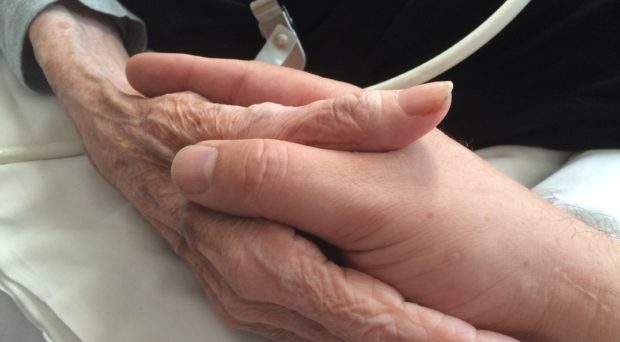
Trials in palliative care are relatively uncommon and mostly focus on the provision of specialist palliative care in ambulatory settings for people with cancer, as shown in this recent comprehensive review.
The trial published today in BMC Medicine is different in a number of ways through a focus on all those thought to be in the last year of life, irrespective of diagnosis, and an intervention delivered by volunteers rather than staff. It was still subject to some of the challenges of conducting trials in palliative care because of concerns about taking peoples time at the end of their lives, and the practical and emotional challenges of dealing with attrition due to advanced illness or death.
Here we discuss two particular areas of challenge in this trial centered around the wait-list design, and recruiting informal/family caregivers.
The ‘wait’ in a wait-list trial
Wait-list designs are considered suitable where it is felt appropriate that all participants should eventually receive an intervention. This was particularly important to the volunteers providing the intervention in this study.
Our initial challenge was in determining the length of time of the ‘wait’, with little data from other studies to guide us. A short time period was chosen pragmatically, as if such services at the end of life do not have a rapid effect, given the prognosis of many participants, they may not be worth offering. Our experiences with and results from the study support this choice, as 20% of study participants died during our eight week follow up period.
The ‘wait’ design is also difficult in a study where service issues may delay the start of the intervention. Providing an appropriate volunteer is not quite the same as prescribing a drug, and sites were concerned with issues such as matching volunteer and patient, whilst also taking account of volunteer availability.
We showed that with bespoke training and regular support, practitioners were able to engage with the research design, understand its merits, and deliver it according to the design – nobody in the ‘wait’ arm of the trial received the intervention ahead of time.
A proportion of those in the immediate care arm did not receive a service during the initial period between baseline and four week data collection. This reflects real life service provision, and as a pragmatic trial, we wanted to mirror this. Data were carefully kept on volunteer allocation and input so that we could report on these issues.
One consideration would have been increasing the frequency of data collection points, but this could have been an unacceptable burden on patients, and administratively challenging to time the arrival and dispatch of survey instruments more frequently via post. With greater research resource, this may be possible by using telephone or face to face data collection; online modes are unlikely to be effective with the older age group who tended to access these services.
Provider staff facilitating the intervention also expressed concerns about the impact of the wait, wishing to provide a service immediately, especially given that some of those in the wait arm of the trial died while waiting. However they also recognized that in day to day service provision people have to wait for services (as shown in the ‘immediate’ arm of the trial), and that we were in a genuine position of equipoise with no other trials in this area.
We showed that with bespoke training and regular support, practitioners were able to engage with the research design, understand its merits, and deliver it according to the design – nobody in the ‘wait’ arm of the trial received the intervention ahead of time.
Recruiting participants
Recruiting patients to the trial was relatively unproblematic, and we had steady and good accrual to the study throughout the recruitment phase, and would have reached our required numbers had a longer recruitment period been possible. This is entirely due to the commitment of the volunteer befriending coordinators working with us, who, with training, embraced their research roles in an enthusiastic yet sensitive way.
More challenging was recruiting family/informal caregivers to take part in the study. We hypothesized that such caregivers may also indirectly benefit from the intervention, but recruiting and collecting data from such caregivers was difficult. The problem was that the caregiver recruitment packs were not necessarily distributed, rather than caregivers choosing not to participate in required numbers.
First, nearly 60% of study participants lived alone, and informally reported to site staff that they didn’t feel they had anyone in that caring role. Second, study participants were asked to give caregiver recruitment packs to those they identified in that role.
It is well known that people do not always identify as caregivers, and direct contact was not possible as their contact details were not necessarily known. Again, remote contact via post was also a likely contributing factor, with no personal relationship developed with the research staff, and likely not the service provider staff either.
Would we choose this design again? Yes. What would we recommend to those considering wait-list trials in palliative care? First, to consider the length of the ‘wait’ and how this impacts on data collection schedules. Second, to ensure sufficient resource to facilitate data collection, ideally in person, so that this is collected at the optimum time.
Comments